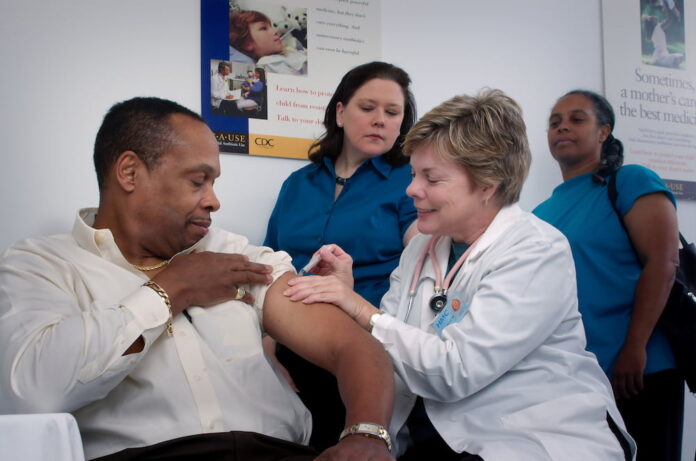The healthcare system is essential to society, providing medical services and care for individuals. However, access to healthcare services and quality of care is not distributed equally among different social and economic groups. This disparity in healthcare results from various factors such as race, gender, income, and education and is a manifestation of systemic inequalities in society.
This article highlights essential things to remember about social justice in healthcare to promote equitable access to healthcare services and improve healthcare outcomes for all.
1. Addressing Health Disparities
Health disparities are the differences in health outcomes experienced by different groups of people. Its often due to social determinants of health such as poverty, racism, discrimination, and inadequate access to healthcare services.
Social justice in healthcare is key to addressing and promoting equity and health disparities. Ensuring that healthcare services are accessible, affordable, and of high quality for all individuals, regardless of their socioeconomic status or background, is the sole motive of social justice in healthcare.
According to Maryville University, addressing health disparities requires a multifaceted approach to addressing social determinants of health.
It promotes health literacy and implements policies and programs that support health equity. For example, Maryville University states that addressing poverty, inadequate housing, and food insecurity can improve overall health outcomes for individuals and communities. Additionally, promoting health literacy can empower individuals to take control of their health and make informed decisions about their healthcare needs.
Moreover, implementing policies and programs that promote health equity, such as Medicaid expansion, can improve access to healthcare services for low-income individuals and communities.
2. Cultural Competence
Cultural competence is the ability of healthcare providers to understand and respond to their patients’ unique cultural and linguistic needs. In addition, they must recognize that patients from different cultural and linguistic backgrounds may have unique healthcare needs, beliefs, and practices that may impact their healthcare experiences.
According to American Public Health Association, health disparities can be linked to more than 30% of the direct medical expenditures incurred by cultures like Asian Americans, U.S. Blacks, and Hispanics. Over four years, the 30% equates to more than $230 billion.
In addition, these populations frequently get worse even when they locate a source of treatment, resulting in increased medical expenses. It is because of unequal access to care and other resources that promote health.
Medical professionals must receive training and education on cultural competence to provide culturally competent care. This training should include information on cultural beliefs and practices, language access, and how to address cultural barriers in healthcare. Additionally, the providers must be aware of their own biases and assumptions and work to address them to provide equitable care to all patients.
3. Health Literacy
Health literacy refers to the ability of individuals to understand and access health information and services to make informed decisions about their health. Individuals with low health literacy may struggle to understand health information, leading to poor health outcomes and disparities in healthcare.
According to National Today, the ability to receive, absorb, and comprehend basic healthcare information required for making wise decisions is challenging for more than 40% of Americans.
If not given proper attention, healthcare illiteracy can substantially hamper attempts to provide healthcare. Thus, every year, October is recognized as Health Literacy Month to highlight its importance and awareness, which was started in 1999 by author Helen Osborne.
It was done to make healthcare information more widely available. Several camps and seminars are organized for medical professionals to explore how to raise health literacy worldwide.
Moreover, medical personnel must communicate health information clearly and understandably to promote health literacy. It includes using plain language, avoiding medical jargon, and providing visual aids to help patients understand complex health information. Additionally, they must ensure patients can access health information in their preferred language and format, such as audio or video.
4. Patient-Centered Care
Patient-centered care involves partnering with patients to ensure that their healthcare needs and preferences are at the forefront of their care. This approach to care acknowledges that patients have unique healthcare needs, beliefs, and preferences that must be considered to provide quality care.
Patient-centered care involves listening to patients, understanding their healthcare goals, and involving them in healthcare decision-making. Healthcare specialists must take the time to build relationships with patients and create a safe and trusting environment where patients feel comfortable sharing their healthcare concerns.
They can promote equitable access to healthcare services by involving patients in their healthcare decision-making. Patients from diverse backgrounds may have unique healthcare needs or cultural beliefs that impact their healthcare decision-making.
5. Collaborative Care
Collaborative care involves healthcare providers working together to provide coordinated and comprehensive patient care. This approach to care ensures that patients receive the right care, from the right provider, at the right time, regardless of their background or circumstances.
It coincides with the DEI (Diversity, Equity, and Inclusion) programs, which throughout the past 20 years, have been more important in the field of healthcare. According to Ernst & Young Global, DEI has been a starting point for health equity in recent years. As a result, healthcare providers now understand that worker equity results in patient equity and good medical outcomes.
About half (42%) of all surveyed firms, including nearly two-thirds (28%) of health systems and mental health institutions, prioritize DEI synergies in their overall strategy. It demonstrates that diversity and inclusion of employees are their top priorities regarding health equity.
Collaborative care involves these medical personnel providers from different disciplines working together to provide coordinated care. It includes primary care physicians, specialists, nurses, social workers, and other healthcare providers.
6. Advocacy and Community Engagement
Healthcare providers must engage with their local communities to better understand their healthcare needs and address healthcare disparities. It includes partnering with community organizations, advocacy groups, and policymakers to promote equitable access to healthcare services.
They must also advocate for policies and practices that promote equity in healthcare. It includes advocating for policies that address healthcare disparities, such as expanding access to healthcare services and reducing healthcare costs.
Additionally, Healthcare specialists can advocate for policies that address social determinants of health, such as affordable housing and access to healthy food.
Social Justice Must Prioritize Promoting Fairness in Healthcare
Promoting equity in healthcare is a critical component of social justice. Healthcare providers must recognize their patients’ unique healthcare needs and preferences and work to address healthcare disparities. It requires a patient-centered approach to care, cultural competence, and health literacy.
Additionally, these providers must engage with their local communities and advocate for policies promoting equitable healthcare access. Addressing healthcare disparities and promoting equitable access to healthcare services can improve health outcomes for all members of society. These could help work towards achieving social justice in healthcare.
Read Also
- Management Reinforcement for Healthcare Providers in a Shifting SystemHealthcare is changing faster than ever. So, providers are feeling the pressure to keep up. New technology, changing patient needs, and constant rule updates make it tough for managers to stay on top. Strong leadership helps teams work better, give great care, and stay happy in their jobs. Here’s how healthcare leaders can strengthen their… Read more: Management Reinforcement for Healthcare Providers in a Shifting System
- Why Effective Disinfection Remains the Foundation of Public HealthFrom hospitals and schools to transport hubs and food production sites, disinfection is central to breaking the chain of infection and protecting community health. The COVID-19 pandemic highlighted how crucial surface hygiene and environmental control are in reducing the spread of harmful microorganisms. Yet, beyond emergency response, routine and validated disinfection practices remain the cornerstone… Read more: Why Effective Disinfection Remains the Foundation of Public Health
- How to Navigate Your Medical Assistant Career PathBecoming a medical assistant can feel both exciting and a little stressful. This job lets you work closely with doctors and other healthcare workers to help patients. But with so many different paths to take, it can be hard to know where to start or how to plan your career. Wouldn’t it be nice to… Read more: How to Navigate Your Medical Assistant Career Path
- Benefits of Enrolling in Botox Training CoursesMany people want to enhance their skills in the beauty field, and one way to do that is through Botox training. With the rising popularity of Botox, enrolling in training courses can set you on a path to a rewarding career. If you are considering this option, you might be curious about the benefits that… Read more: Benefits of Enrolling in Botox Training Courses
- How Pilates Certification Enhances Professional Growth in HealthcareAre you looking for a way to expand your skills and stand out in healthcare? Pilates certification can be a powerful step in your professional journey. It not only helps you understand movement and body mechanics. It also gives you tools to support patient recovery. It also improves mobility, and promotes wellness. Ready to see… Read more: How Pilates Certification Enhances Professional Growth in Healthcare






